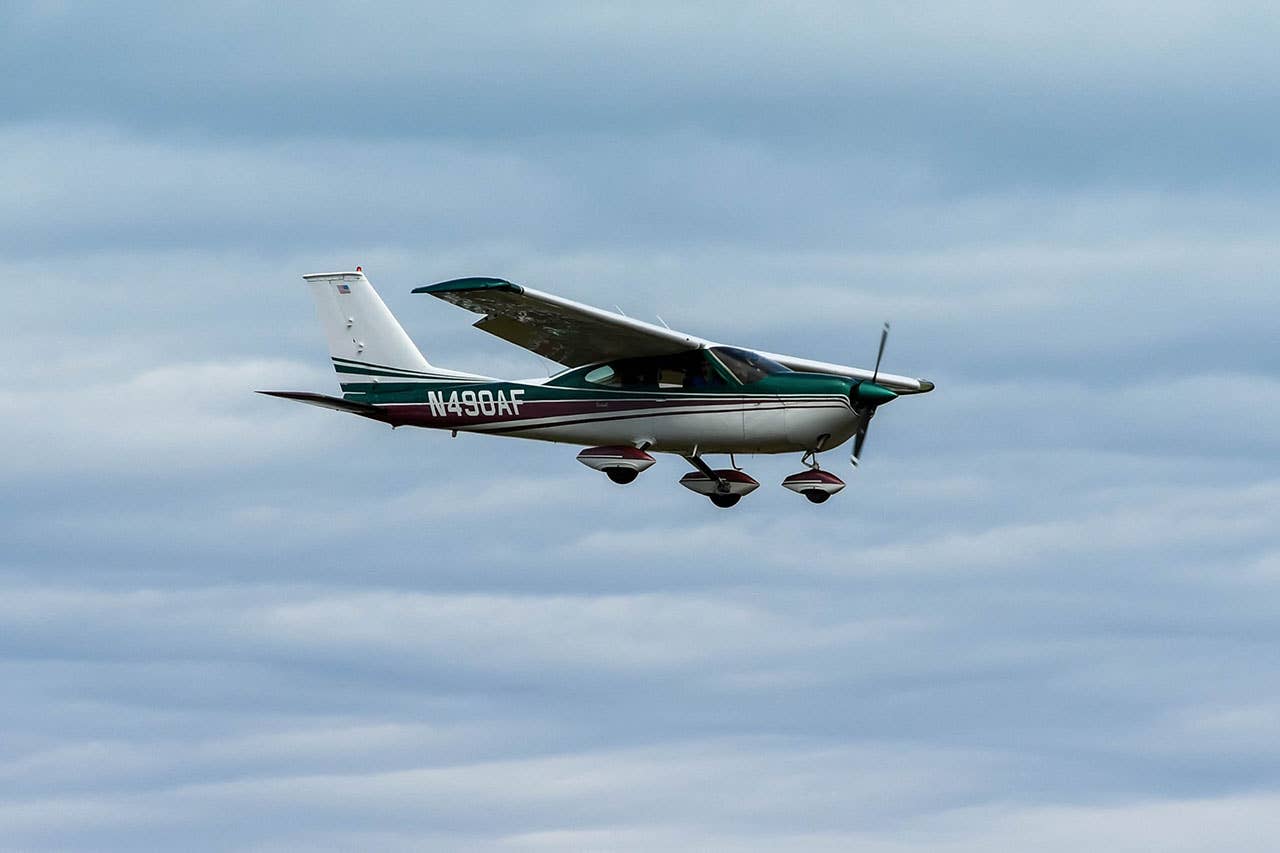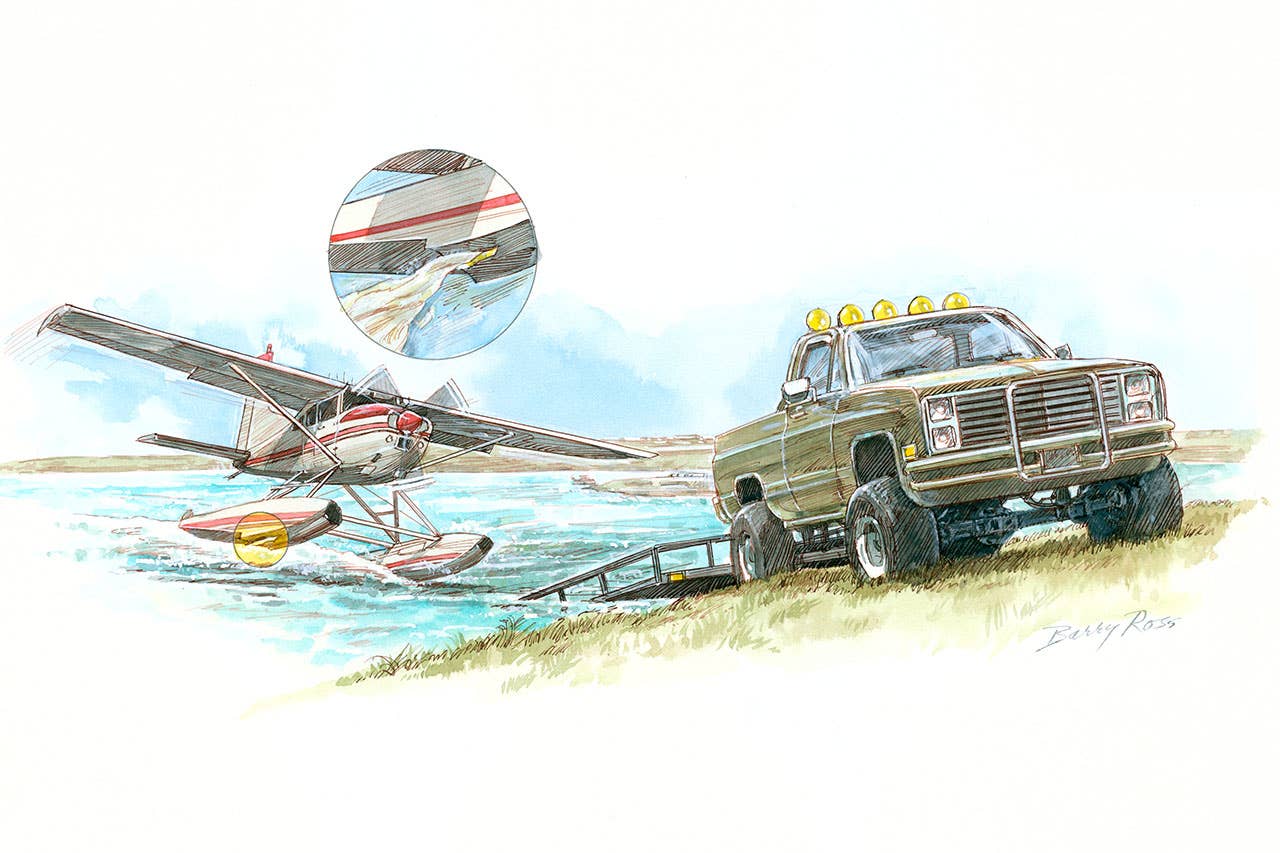The Wisdom of Flying Tight Traffic Patterns
For safety, stay closer to the runway. Here’s how to do it.

We can think back to our student pilot days and, specifically, our eager desire to get to those touch-and-goes. We recall spending a lot of time learning what then appeared to be relatively incoherent routines like ground reference maneuvers, climbs, turns, slow flight, descents and stalls because our instructor indicated these were the basic building blocks.
But, apparently, once we demonstrated reasonable mastery of these maneuvers and the touch-and-goes lesson finally arrived, the excitement and concentration of takeoff and landing practice brought many of us to almost neglect what goes on between each one of them---the traffic pattern. This is the maneuver (or series of maneuvers) that encompasses most of our previous training but is often flown sloppily by students and seasoned pilots alike.
But shouldn't we grant to the traffic pattern the same care and training value we assign to attaining those grease job touchdowns?
Think of how many times you have seen someone fly their 1,600-pound trainer around the pattern as if it possessed all the maneuvering limitations of a heavy jet. Been there yourself?
The frequently resultant wide traffic pattern is not harmless by any means; its consequences can range from wasted time, fuel and money to a power-off glide that could fall short of the airport. Fortunately, the wide traffic pattern just causes confusion and additional workload most times. Consider the potential danger of a midair collision as aircraft following you in sequence cut you off because your turns are so wide, they lose sight of you.
If you are regularly a member of a wide traffic pattern, start considering more seriously the consequences of a power failure. You might very well find yourself wishing you had stayed home as you glance at the airport but unavoidably continue to sink into populated areas, trees, buildings or powerline-infested roads. Simply summarized: Whether you land on a runway, a taxiway, the grass, the ramp or across them all, there is no better place than an airport for making a forced landing!
Start improving your pattern by drawing some "out of bounds" lines from runway ends. Approximately a half-mile for upwind and three-quarters of a mile for downwind and final. Make coordinated turns of constant bank (30 degrees) and hold a wind correction as necessary to describe a rectangular ground track. This pattern shape evolved after the realization of its definite advantages over the square, circular and oval styles. Basically, the rectangular method of going around a runway compels pilots to stay closer, and the distinct legs of this geometric figure permit labeling them to help us locate traffic the tower points out.
How to Fly Good Traffic Patterns
For starters, you should use all available power during your takeoff roll and keep it there until you reach traffic pattern altitude. Complex airplanes that call for a power reduction on climbs can be left at takeoff power on traffic pattern climbs; these are brief and should cause no abnormal wear and tear. Consult your Pilot Operating Handbook for power settings if you are flying a complex airplane. Use full steam ahead on upwind, looking for abundant altitude and placing that comfortable cushion underneath before you go much beyond the field boundary. Ideally, best angle of climb speed (Vx) should be used for the initial half of the climb, accelerating to best rate of climb speed (Vy) for the second half.
Traffic pattern work involves low-altitude operations with maximum variations in engine power settings and cooling requirements, which bring out the worst in tired engines.
Much will or has been talked about during your training about power failures shortly after takeoff and the possibility of turning back toward the takeoff runway. A power failure shortly after takeoff will require an immediate lowering of the nose to transition from a power-on-climb to a power-off-glide attitude in order to avoid a stall. Combining this with an attempt to make a 180-degree turn at a very low altitude increases the danger of stalling and impacting the ground out of control. It is a complex decision you must give thought to according to your particular airplane and airport layout. Maintaining controlled flight and landing within a few degrees of straight ahead is most frequently the best route to take.
Speed control possibly holds the key to your successful takeoff and landing practice experience. Once you level off at pattern altitude, reduce power to yield an airspeed no higher than 20 mph above normal approach speed. This is crucial, and getting behind the airplane at this point by not timely reducing power may have you at cruising speed rather quickly on downwind. So, pull it back as you level off. Relax; check traffic, wind and gauges. While on downwind or early base, complete your landing checklist. SEL-fixed gear, fixed-pitch airplanes have simple landing checklists. Airplanes with L/R fuel tank selector positions only and not BOTH require increased awareness. Running a tank dry at low altitudes can make for some interminable seconds of engine cough.
You may be alone in the airplane but can have some fun preparing yourself to be a pilot-crewmember and, besides, talking to yourself is not always a sign of insanity in single-pilot operations. The "two communications rule" is used by crews to detect pilot incapacitation during critical phases of flight.
For example: On short final approach, a "1,000 feet" callout by the pilot not flying (PNF) requires a "cleared to land (or not)" response from the pilot flying (PF). If no response after a repeat callout, the PNF may suspect pilot incapacitation and prepare to take over the controls.
Practice command/challenge and response communications in the traffic pattern and consider incorporating these into your flying technique. For example, on takeoff, command, "takeoff thrust;" respond, "thrust set." Reaching pattern altitude, call out, "1,000 feet;" respond, "leveling-off." On downwind, "landing checklist," and run the checklist. Turning final, "final;" respond "cleared to land (or not)." Later, you can train your frequent passengers on callouts/responses and enjoy a fun, safer experience together.
Just before arriving at the point to make your close-in base, reduce power and slow down to approach speed plus 10 mph. If your speed is high, you are
in for some steep turns and a possible overshoot of the final approach course. Make a precise turn to base and roll out, checking the runway and looking for other traffic. Midairs occur on base and final approach all too frequently. Be alert! Plan your next turn to arrive on final approach on the extended centerline of the runway and at approach speed.
You may be alone in the airplane but can have some fun preparing yourself to be a pilot-crewmember and, besides, talking to yourself is not always a sign of insanity in single-pilot operations.
A common misconception is that of following traffic in the pattern. If your traffic is wide, you are wide. Why? You only have to follow in sequence. No need to track over every barn, lake or cow your traffic flies over. Stay on your speed profile and within your pattern boundaries, but if you need to reduce airspeed further, here is a great opportunity to practice your slow flight at approach speed, but don't lose any altitude. Occasionally, in spite of your slow flight, you will be forced to extend your downwind leg. If this happens, continue to maintain your altitude and wait to be closer to the runway to start your final descent.
A meticulously flown, tight traffic pattern provides ample safe and economical training. Try it, and the next time you see those "heavy bomber" pilots flying all over the sky, ruining it all!subtly let them know.

Subscribe to Our Newsletter
Get the latest Plane & Pilot Magazine stories delivered directly to your inbox






